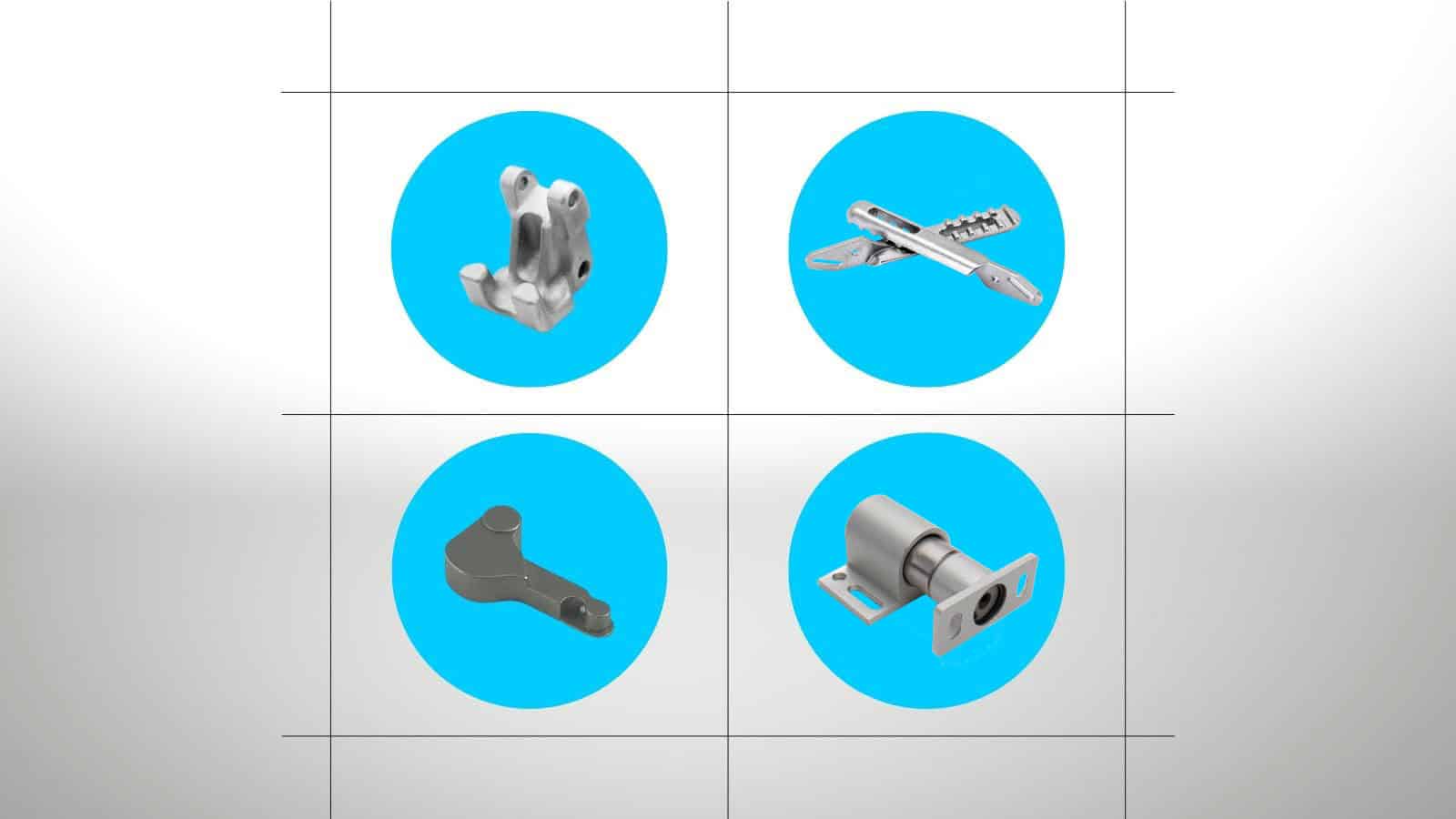As you may or may not know, the Intelligent Layering, a proprietary technology developed by 3DEO, provides the best as-printed surface finish in metal 3D printing. Customers have compared our surface finish to a “very nice cast finish” in that it’s matte silver and silky smooth. While it’s good enough in the as-printed state for many applications, there are also a number of options to improve or change the surface post print.
Customers may want a different surface finish for a variety of reasons, including:
- Making it more aesthetically appealing or reflective
- Making it more durable by increasing its resistance to wear, corrosion, and heat
- Smoothing out uneven surfaces
- Improving its electrical conductivity
- Adjusting its shape or size
Ra = Surface Roughness
Ra, Roughness Average, is the measurement of the smoothness of a surface of a metal component. It’s the arithmetic average of surface heights measured across an entire surface. Simply put, it’s the average height of the microscopic peaks and valleys on any given surface. The Ra readings are acquired by using a profilometer that detects and records surface roughness.
For example, 3DEO’s Intelligent Layering process consistently attains finishes as fine as 100 Ra, measured in microinches. This is a very nice, cast-like surface finish. Polishing can improve 3DEO’s surface roughness to < 10 Ra, improving its functionality and aesthetic value.
Several post-processing methods can provide a 3D printed part with the necessary smoothness. Disc finishing, high-energy centrifuge, and stream finishing are three that have been utilized successfully.
If a design specifies smoother finishes than what the 3D printer provides, 3DEO offers some post-processing options that are controlled in-house. That means we can control the entire production process from start to finish, allowing us to manage both costs and quality.
Here are some of the techniques that are used here at 3DEO to improve surface finish to the customer’s specification:
Polished finish
Metal polishing is the process of smoothing and shining metal surfaces with abrasive materials. Metal polishing should be a part of your metal finishing process when needed to remove oxidation, corrosion, or other contaminants that could tarnish the appearance of your metal surfaces and reduce the life-span of your part. Polishing is a relatively low-cost procedure and can result in several finishes. The two most common being satin and mirror finish.
Bead blasting
Blasting is the acceleration of particles by air or mechanical means to a surface to achieve a variety of surface finish effects. The effects are determined by media type, size, speed, and direction of impact. The visual appearance of a blasted surface tends to be a dull to bright satin-matte finish.
Bead blasting is more efficient for hard-to-reach areas on parts with complex geometrical shapes. Finely reground beads of a variety of materials smooth out the surface and blend imperfections. The results are similar to polishing but take less time and can reach all those difficult spots.
Black Nitride
Black nitriding is the thermochemical that simultaneously diffuses nitrogen and carbon into the surface of ferrous metals. During the process, a two-part surface layer is formed, an outer iron nitride layer with a nitrogen diffusion layer below it. Nitrogen and carbon are absorbed by and diffused into the surface of the metal. Reproducible and uniform layers with a predetermined thickness will be formed on all areas of the metal.
Often used in the production of automotive parts, black nitriding improves corrosion, hardness and wear resistance. The bonus is it does not affect the dimensions of the component. Hardness after black nitrite treatment will be 52-58 Rockwell.
Cerakote
Cerakote is a ceramic-based finish that companies apply to metals, plastics, polymers, and wood. It’s basically an industrial paint that acts both as coloring and a sealant. The coating enhances the physical properties of each part including resistance to abrasion, wear, corrosion, and chemicals. The impact strength and hardness are marginally improved, but this is not a high-impact finish.
Matte Finish
3DEO’s process of metal additive manufacturing creates parts in the as-printed state with a matte surface finish. In most cases, no secondary deburring or polishing operations are required, but with the unique chromium composition, the surface can be polished to a glossier finish with some simple carbide tooling.
Talk to the experts at 3DEO about your requirements on surface finishes
The reasons for using a surface finish apply to 3D-printed parts and those manufactured with traditional methods such as machining. Either way, you’ll need to consider all the aspects of your part before deciding on the best surface finishing process.
The finishing process you use will be affected by the features of the part, which include:
- The component’s material
- Its shape
- Its thickness
- Its weight
- Its planned use
- The environment in which it will be used
The production process at 3DEO is automated, allowing for a lower production cost that competes favorably with all other manufacturing services. And, as mentioned earlier, 3DEO offers the above finishing options and controls them in-house.
At 3DEO, 3D printing comes with unlimited potential at reasonable and competitive prices. Our Intelligent Layering® process, a proprietary and patented metal 3D printing technology, makes it possible for us to offer prototype and production parts that are comparable in price and quality to CNC machining and metal injection molding.


